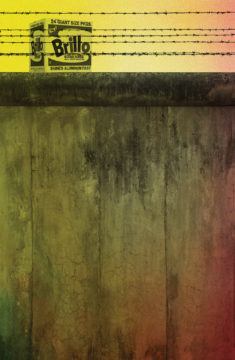George Scialabba at The Baffler:
 One of The Free World’s larger themes is the replacement of Paris by New York as “the capital of the modern.” For nearly a century, Menand writes, “Paris was where advanced Western culture—especially painting, sculpture, literature, dance, film, and photography, but also fashion, cuisine, and sexual mores—was . . . created, accredited, and transmitted.” It was not the Nazi occupation that changed things; Paris got off lightly compared with other occupied capitals. (Though it would have been burned to the ground if the German commandant had not ignored Hitler’s orders.) And immediately after the Liberation in 1944, there was a cultural efflorescence. Existentialism was in vogue everywhere; its three main exponents—Sartre, Camus, and Beauvoir—were international celebrities. But the compass needle was turning: as Sartre acknowledged, “the greatest literary development in France between 1929 and 1939 was the discovery of Faulkner, Dos Passos, Hemingway, Caldwell, Steinbeck.” American leadership in painting was even more pronounced in the 1940s and 50s. Paris would always retain its aura, particularly for Black American writers and musicians, though not only for them—Paris would play a large part in liberating Susan Sontag, for example. But American global primacy was so complete in the fifties and sixties that the cultural primacy of its capital city could not be gainsaid.
One of The Free World’s larger themes is the replacement of Paris by New York as “the capital of the modern.” For nearly a century, Menand writes, “Paris was where advanced Western culture—especially painting, sculpture, literature, dance, film, and photography, but also fashion, cuisine, and sexual mores—was . . . created, accredited, and transmitted.” It was not the Nazi occupation that changed things; Paris got off lightly compared with other occupied capitals. (Though it would have been burned to the ground if the German commandant had not ignored Hitler’s orders.) And immediately after the Liberation in 1944, there was a cultural efflorescence. Existentialism was in vogue everywhere; its three main exponents—Sartre, Camus, and Beauvoir—were international celebrities. But the compass needle was turning: as Sartre acknowledged, “the greatest literary development in France between 1929 and 1939 was the discovery of Faulkner, Dos Passos, Hemingway, Caldwell, Steinbeck.” American leadership in painting was even more pronounced in the 1940s and 50s. Paris would always retain its aura, particularly for Black American writers and musicians, though not only for them—Paris would play a large part in liberating Susan Sontag, for example. But American global primacy was so complete in the fifties and sixties that the cultural primacy of its capital city could not be gainsaid.
more here.
